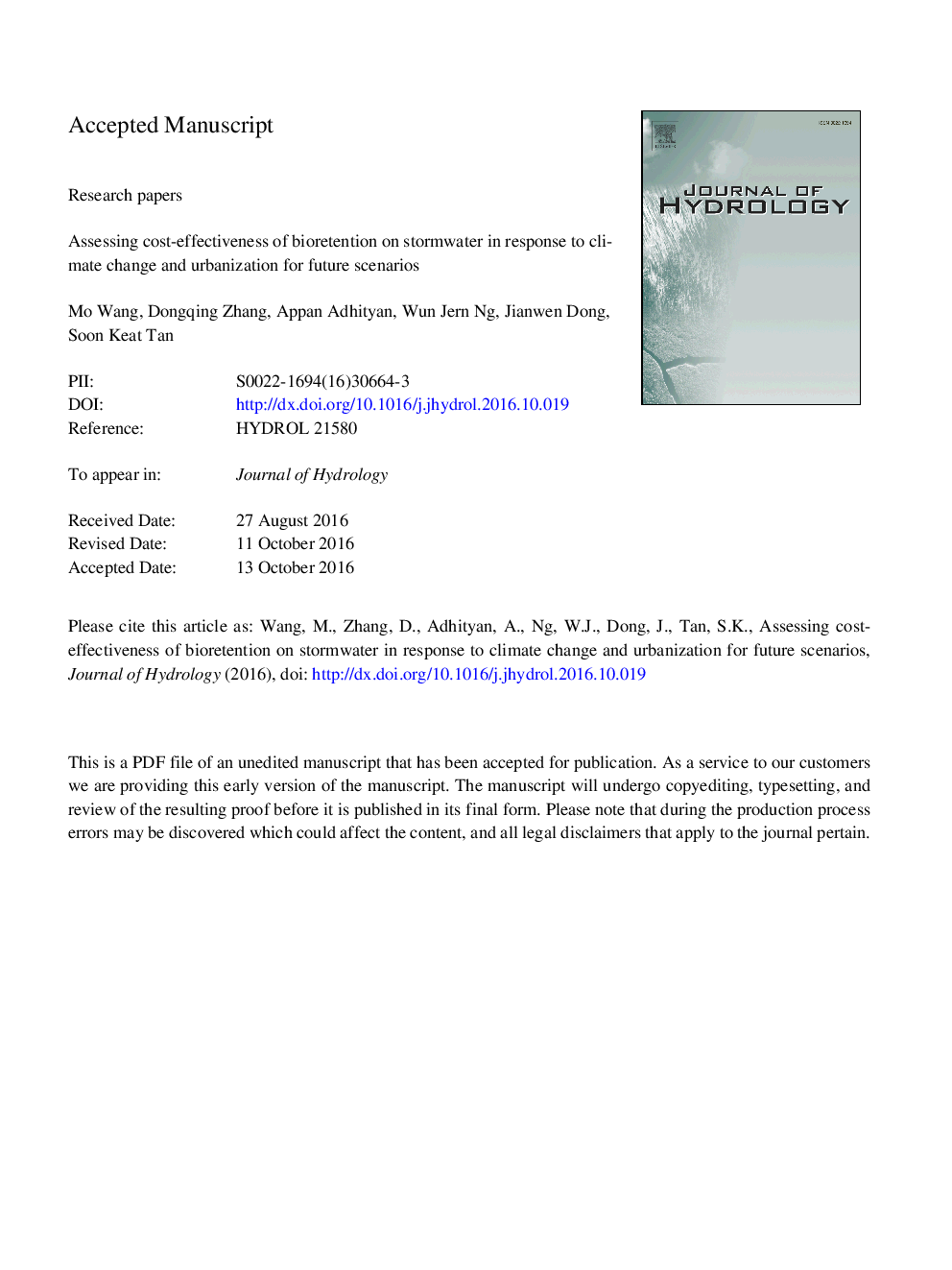| Article ID | Journal | Published Year | Pages | File Type |
|---|---|---|---|---|
| 5771442 | Journal of Hydrology | 2016 | 42 Pages |
Abstract
Bioretention, as a popular low impact development practice, has become more important to mitigate adverse impacts on urban stormwater. However, there is very limited information regarding ensuring the effectiveness of bioretention response to uncertain future challenges, especially when taking into consideration climate change and urbanization. The main objective of this paper is to identify the cost-effectiveness of bioretention by assessing the hydrology performance under future scenarios modeling. First, the hydrology model was used to obtain peak runoff and TSS loads of bioretention with variable scales under different scenarios, i.e., different Representative Concentration Pathways (RCPs) and Shared Socio-economic reference Pathways (SSPs) for 2-year and 10-year design storms in Singapore. Then, life cycle costing (LCC) and life cycle assessment (LCA) were estimated for bioretention, and the cost-effectiveness was identified under different scenarios. Our finding showed that there were different degree of responses to 2-year and 10-year design storms but the general patterns and insights deduced were similar. The performance of bioretenion was more sensitive to urbanization than that for climate change in the urban catchment. In addition, it was noted that the methodology used in this study was generic and the findings could be useful as reference for other LID practices in response to climate change and urbanization.
Keywords
Related Topics
Physical Sciences and Engineering
Earth and Planetary Sciences
Earth-Surface Processes
Authors
Mo Wang, Dongqing Zhang, Appan Adhityan, Wun Jern Ng, Jianwen Dong, Soon Keat Tan,
